Written and illustrated in that unique style that John Hendrix is famous for, John Brown: His Fight For Freedom is a powerful and exciting (while also tragic) picture book biography of the 1850’s abolitionist, John Brown. Published on the 150th anniversary of John Brown’s raid on Harpers Ferry, this picture book tells the tragic tale of John Brown’s attempt to make slavery economically untenable.
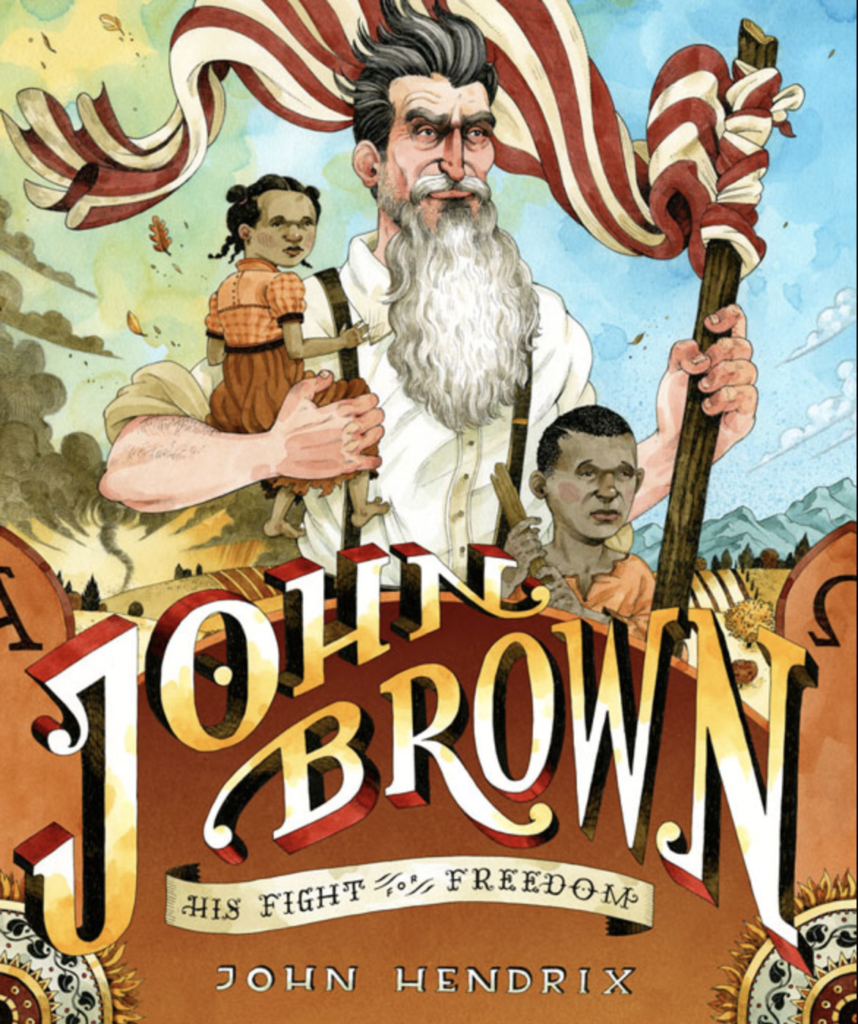
A devout Christian, John Brown was infuriated by Christian acceptance of the practice of slavery and knew that it was an abomination for one man to own another.
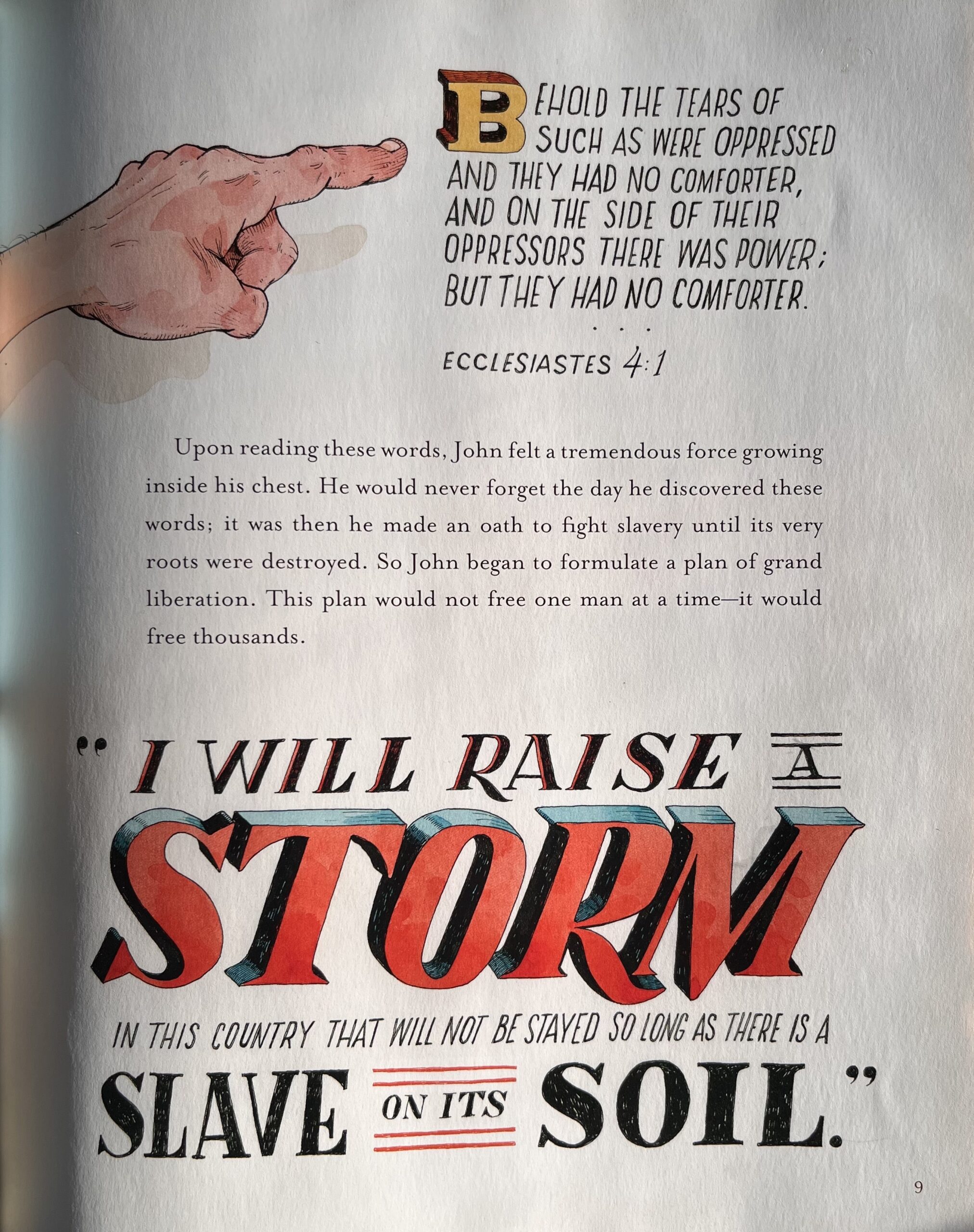
Believing that the political process was too slow and too uncertain, he formulated a different kind of plan to bring about the end of slavery. He believed that he could make slavery too economically vunerable to be reliable. By organizing teams of white men and free black men who would sneak into slave states and free small groups of slaves, owners would realize that they could not rely on slaves as a constant workforce. This would make everything related to owning slaves more costly and deter plantation owners from buying and keeping slaves.
Brown’s passion and his work drew the attention of Frederick Douglass and Harriet Tubman. Douglass believed in John Brown and admired him. But he did not believe in the plan. As much as he wanted to support Brown’s efforts, he could not agree to do so. Douglass believed that this would result in the loss of too many precious lives. Tubman, on the other hand, was more inclined to think that this was a possibility and threw in her support.
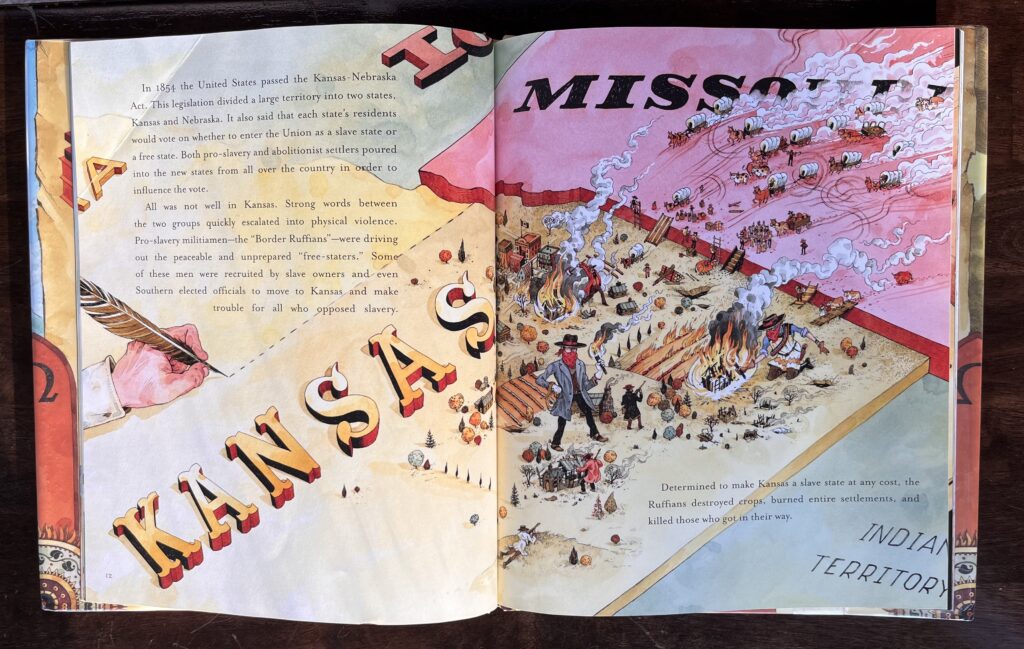
Brown believed that they needed a signal call, an incident that would draw national attention. And so, he and his team decided to raid Harpers Ferry, Virginia. It was a devastating failure, and Brown was seriously wounded and captured. Brown was immediately tried and condemned to die for the insurrection.
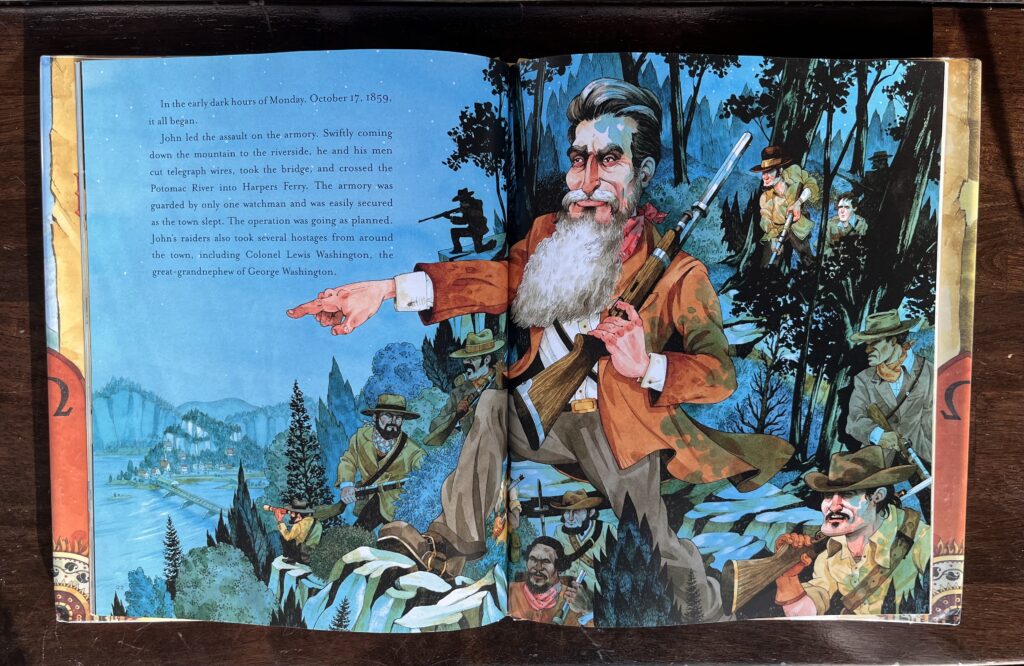
Brown’s actions may have resulted in failure, but during his imprisonment, he wrote many letters which were published in newspapers across the country. By the time he was hanged, the hearts of Americans were stirred up, and many joined the abolitionist cause.
“John never lived to see a United States free of slavery. But in death, he acomplished what he could not in life . . . his voice roused a complacent nation to action.”
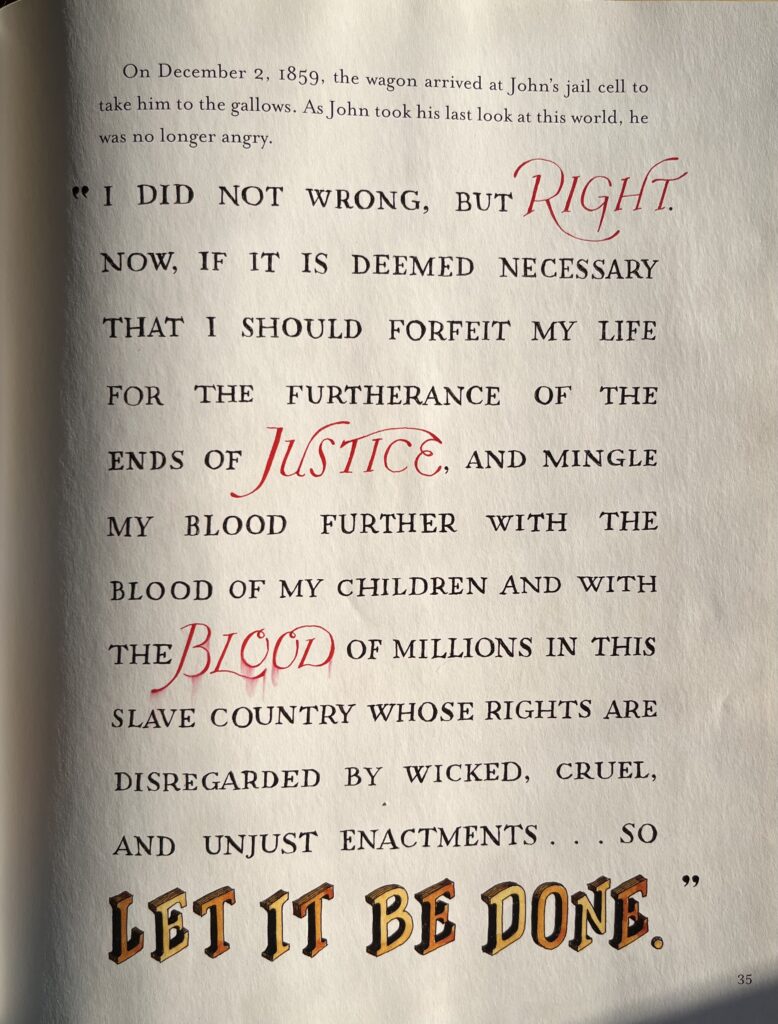
The illustration in this book is memorable and exciting. While it may be too busy or cartoonish for some, I think that for children, and boys especially, it is captivating and compelling.
I am sad to see that this book is out of print. I found a used copy quite reasonably priced. Head over to Biblioguides to learn more and to use their book links to used copies.